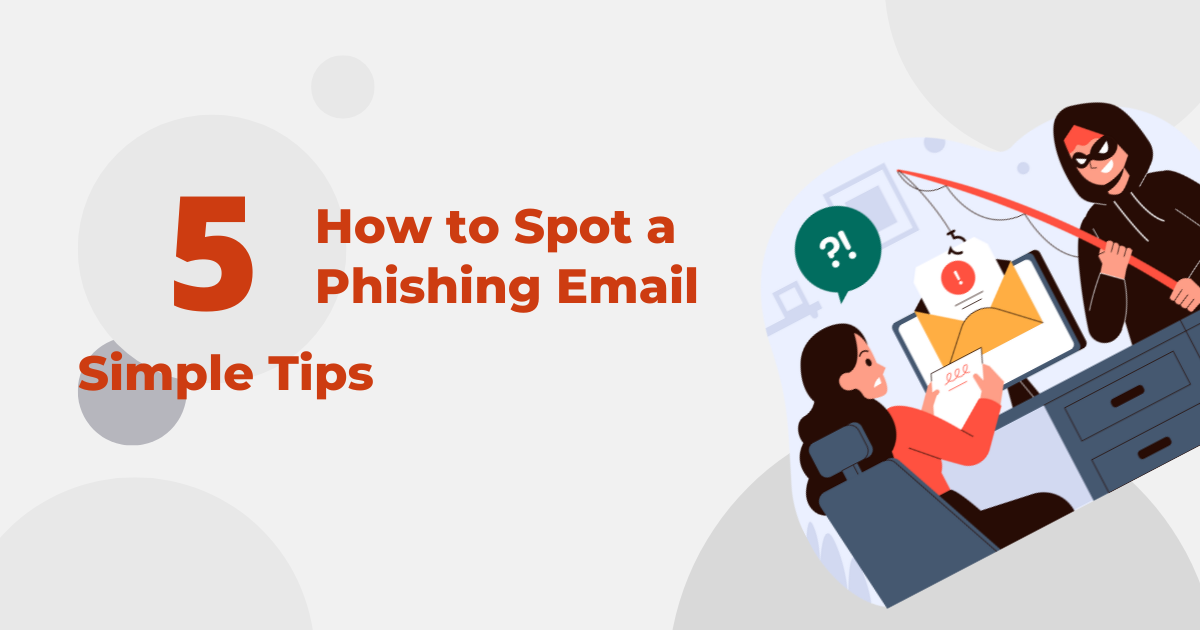Don’t Get Fooled: 5 Powerful Tips to Expose Phishing Scams

Introduction
Phishing scams are fraudulent attempts to obtain sensitive information by masquerading as a trustworthy entity in electronic communications. With cybercriminals becoming increasingly sophisticated, it's crucial to recognize and avoid phishing emails. We will provide five powerful tips to help identify phishing scams and protect yourself from threats.
1. Examine the Email Address Carefully
Phishing emails often come from email addresses that mock legitimate ones but with subtle differences. For example, you might receive an email from "support@paypa1.com" instead of "support@paypal.com."
- Example: If you receive an email from "service@amaz0n.com" instead of "service@amazon.com," it's likely a phishing attempt.
- Tip: Always double-check the sender’s email address, looking for misspellings or unusual domain names. Verify the email address by comparing it to previous legitimate emails from the same source.
2. Look for Generic Greetings and Language
Legitimate companies typically use personalized greetings, while phishing emails often use generic terms.
- Example: A phishing email might start with "Dear Customer" instead of using your actual name.
- Tip: Be wary of emails not addressing you by name or containing generic language. Legitimate businesses usually have your details and use them to address you personally.
3. Check for Urgent or Threatening Language
Phishing emails often create a sense of urgency or fear to prompt immediate action.
- Example: An email stating, "Your account will be suspended in 24 hours if you do not verify your information."
- Tip: Look out for emails that pressure you to act quickly or threaten negative consequences. Take a moment to verify the claim by contacting the company directly through their official contact information.
4. Inspect Links and Attachments Carefully
Phishing emails may contain malicious links or attachments designed to steal your information.
- Example: A link that appears to lead to "www.bankofamerica.com" but, when hovered over, shows "www.boa-secure-login.com."
- Tip: Hover over links to see their actual destination before clicking. Avoid downloading attachments from unknown or suspicious emails. If an email prompts you to log in or enter personal information, go directly to the official website.
5. Verify with the Source Directly
Confirm the email's legitimacy when in doubt by contacting the source directly.
- Example: If you receive an email from your bank asking for account details, call the bank using the number on their official website to verify the request.
- Tip: Use contact information from a trusted source, not the email itself. Contacting the company or individual directly to verify the email can help confirm whether the email is legitimate.
Conclusion
Phishing scams are a persistent threat, but you can protect yourself from these deceitful schemes by examining email addresses, looking for generic greetings, being cautious of urgent language, inspecting links and attachments, and verifying with the source. Stay vigilant and share these tips with others to help spread awareness.
FAQs
What should I do if I’ve already clicked on a phishing link?
If you've clicked on a phishing link, immediately change your passwords and monitor your accounts for any unusual activity. Run a virus scan on your device and contact your bank or other relevant institutions to alert them.
Can phishing emails affect my mobile device?
Yes, they can install malware or direct you to fraudulent websites. Always be cautious when opening emails on your mobile device, and follow the same safety protocols.
How do I report a phishing email?
You can report phishing emails to the Anti-Phishing Working Group (APWG) at reportphishing@apwg.org. Many email providers also have built-in reporting tools to help combat phishing. Additionally, inform the legitimate company being impersonated so they can take appropriate action.
